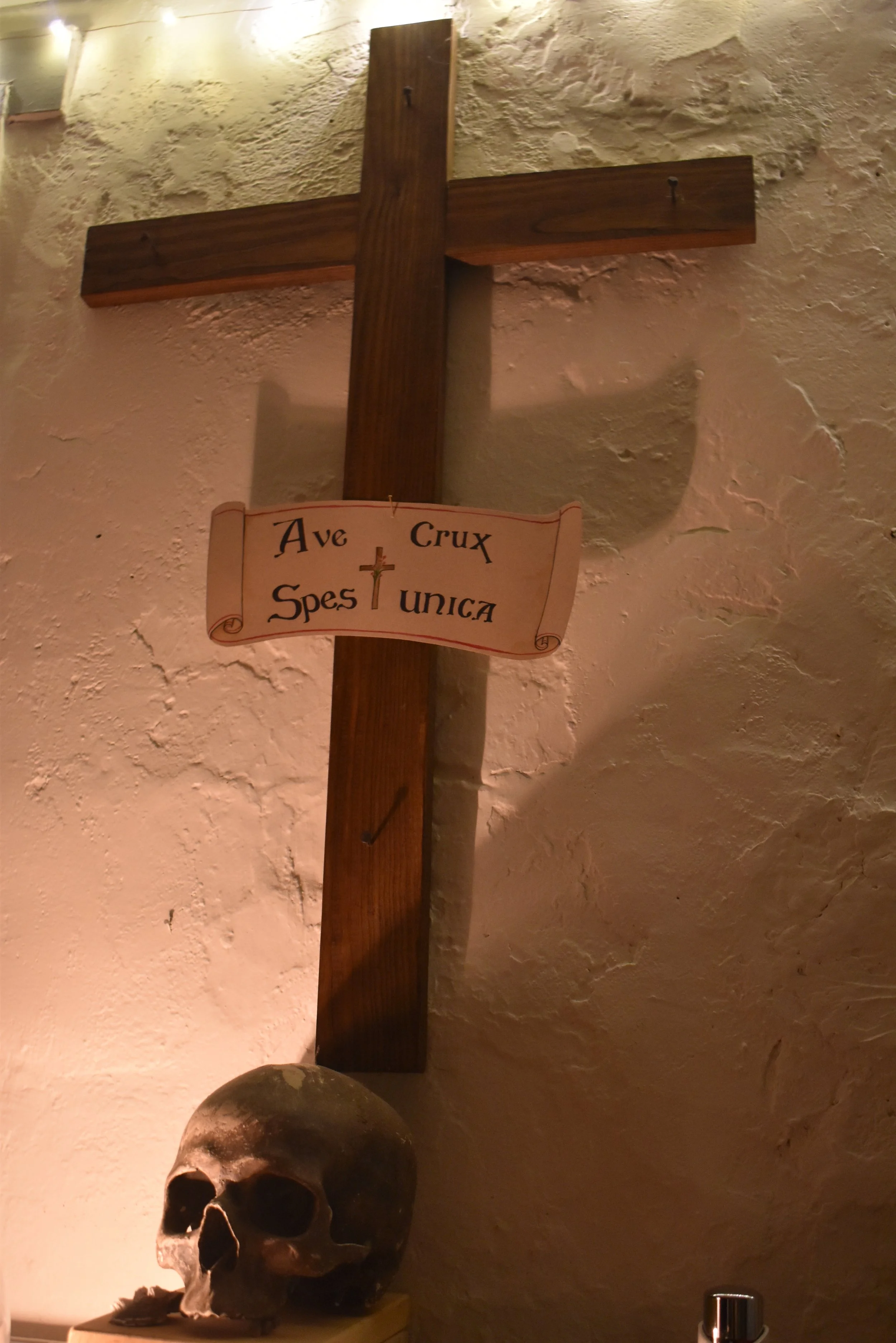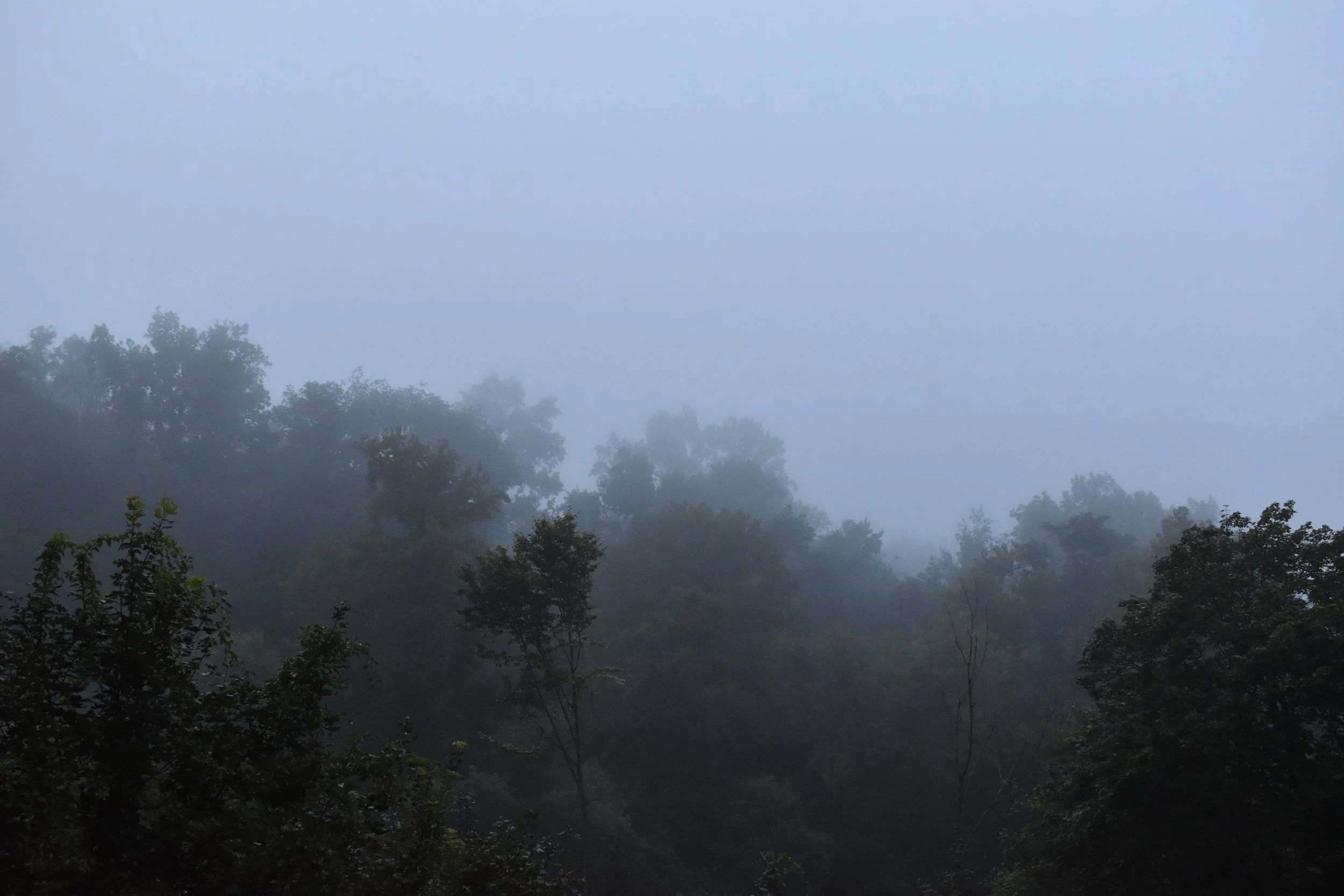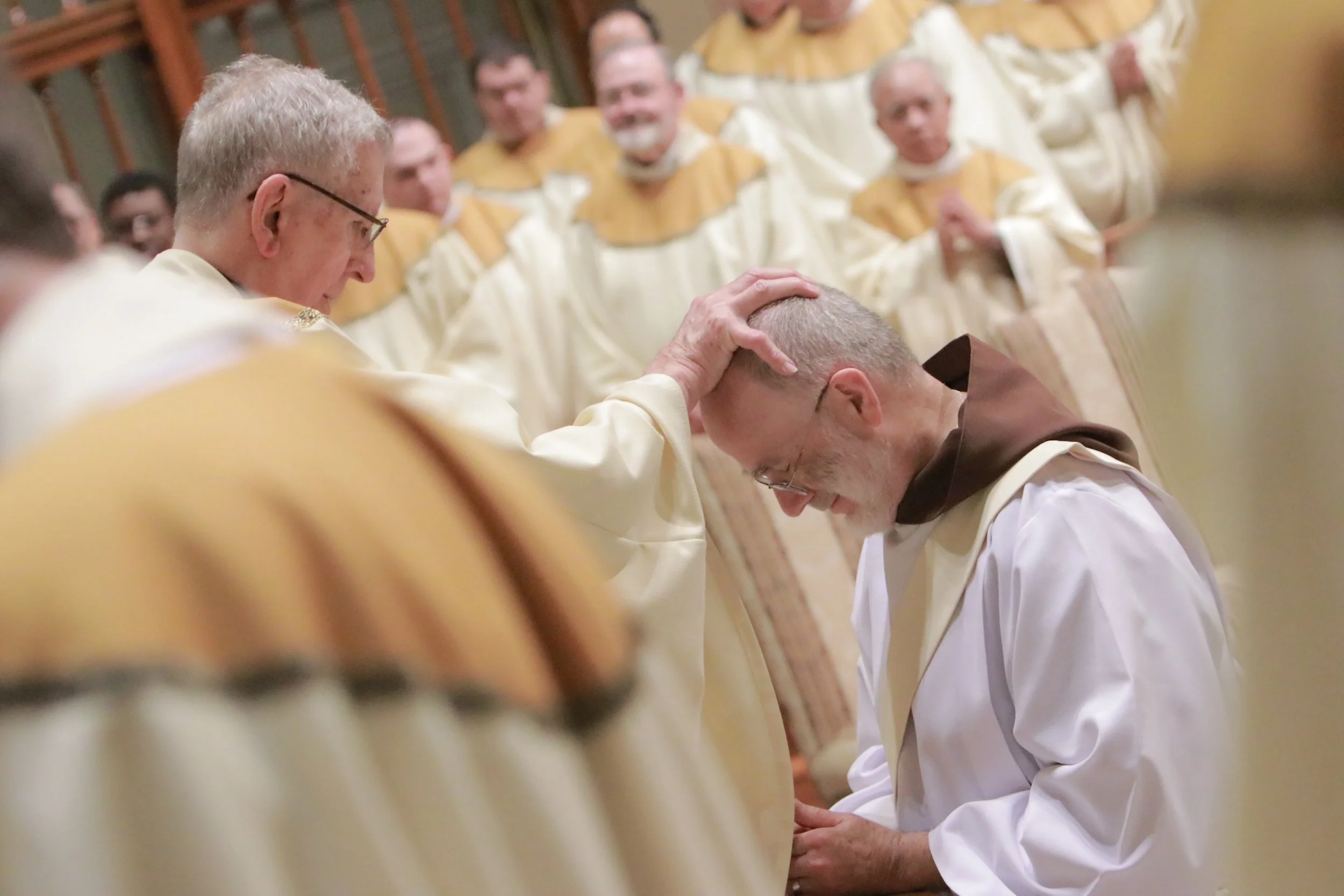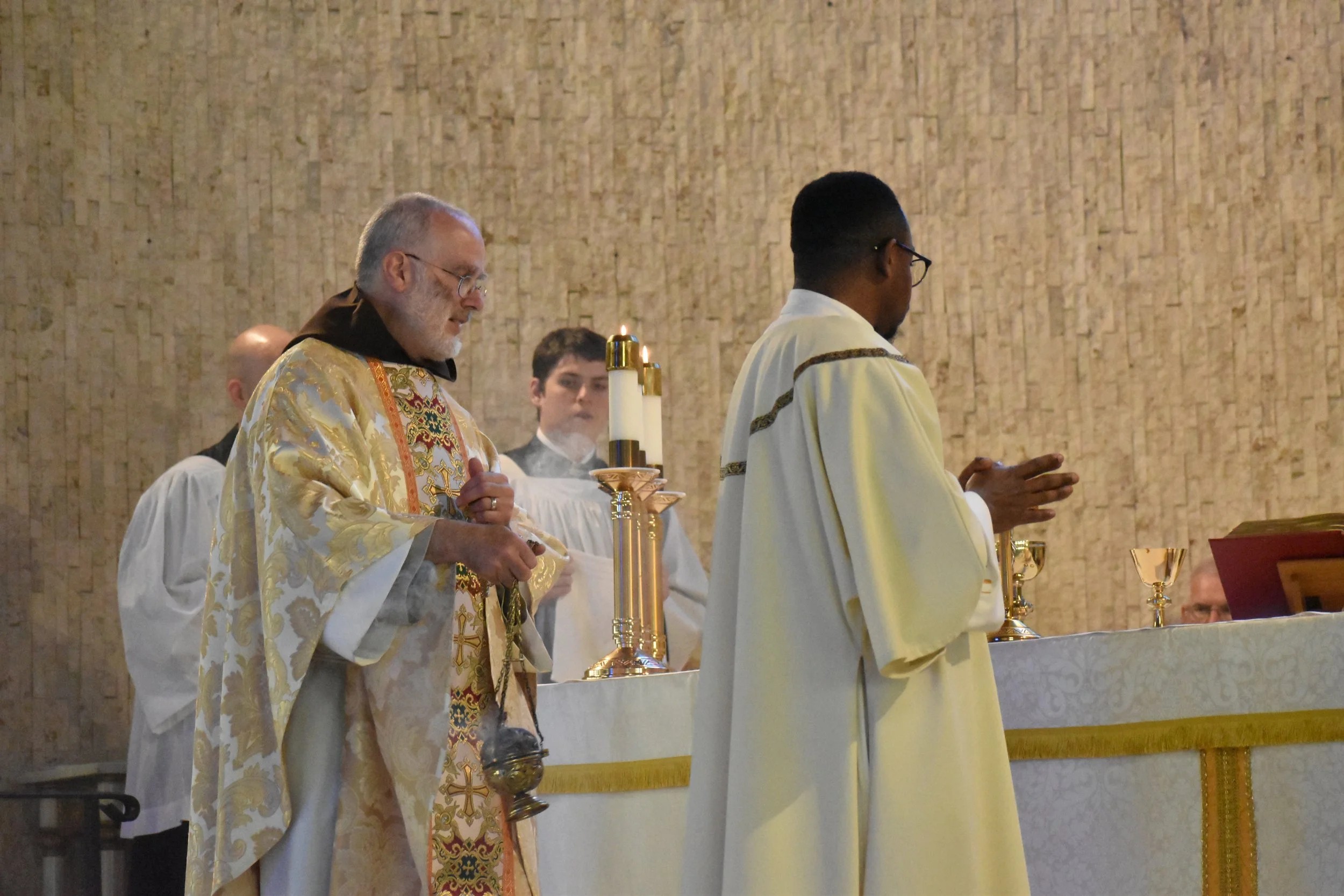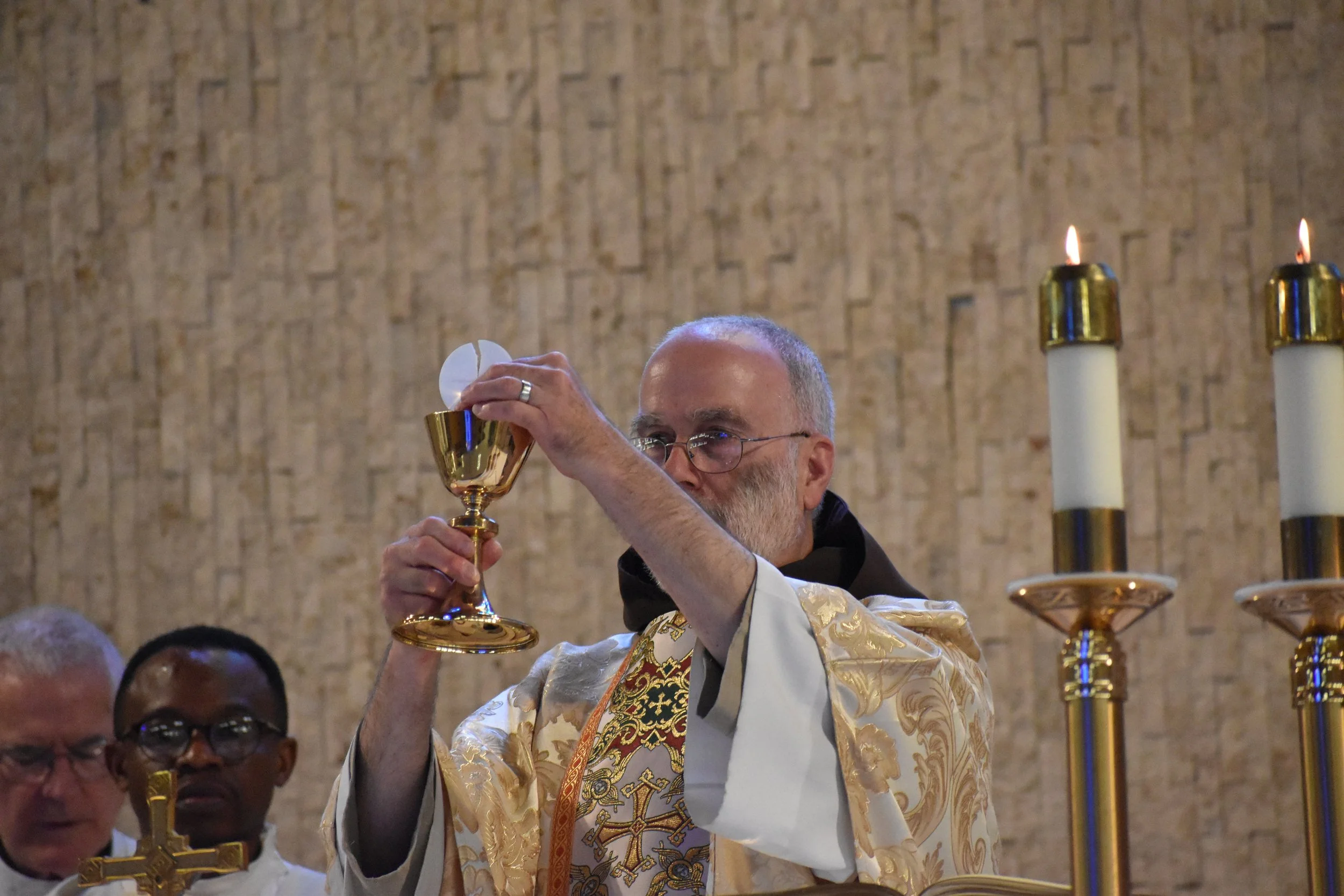Santa Maria della Bruna: 15 October 2025
La Madonna Bruna is the oldest icon adopted and venerated by the Carmelites and is a type of “tenderness” icon (Eleusa in Greek). This icon is one of many purported to have been painted by Saint Luke the Evangelist, and its history was shrouded in mystery until its appearance in Naples in the mid 13th century when the violence of Muslim invaders forced the hermits off of Mount Carmel and into Europe. Before their flight, the hermits gathered their most prized possessions – among which was this Virgin of Tenderness, which they brought with them to the outskirts of the city of Naples where the icon, housed in the chapel of the Carmelites, became well loved by the local people.
In the jubilee year 1500 A.D., a number of Napolitans went on pilgrimage to Rome, placing the journey under the patronage of the Mother of God. Wanting to lead their procession with an image of Mary, the pilgrims persuaded the Carmelite Fathers to lend their prized Madonna della Bruna icon to the party which set off for Rome on April 5th, 1500. A mile from the city, a cripple lying by the roadside saw the pilgrims marching toward him, the Theotokos leading the way, and vowed before the icon that, if he were made well and able to walk once again, he would then join the pilgrimage to Rome. In that instant, he was cured of his disability, and standing up, he rejoiced, joining the train of his brethren on their way. The story of the miraculous healing preceded him, progressing from village to village and causing a stir. The sick and infirm began coming from all over to visit and venerate the icon and many were healed with the multitudes as witnesses when the icon processed around the city and was displayed in Saint Peter’s Basilica for three days.
King Frederick II, King of Naples, decreed that the sick, deaf, and blind, be brought to Naples and he prepared a hospital alongside the church of the Carmelites, which the image had been returned to after the pilgrimage, and those unfortunate were housed within. A high Mass was celebrated and during the Gloria, the image was unveiled, and at the same instant, a ray of light rested on the face of the Madonna, blackened by centuries of votive candles burning beneath the icon. At the same moment, a ray of light shone on the faces of the infirm and they were cured of their maladies.
Soon after the hermits on Mount Carmel built a chapel dedicated to the Virgin Mary, they began calling her “Lady of the Place.”
Today on the feast of Saint Teresa of Jesus (Avila) Father Richard blessed an image of the Black Madonna of Naples to be the “Lady of this place” May Our Mother, the Queen of Heaven, guide us ever closer to her Divine Son.
Dry Cross
In every cell of a Carmelite monastery hangs what Saint John of the Cross called a “dry cross” one that is barren and without the corpus of the crucified Christ. This cross, also present in the refectory, aids the general austerity of the architecture perfectly and communicates, wordlessly, a number of ideas. Sometimes, three nails will still be in place, each representing the evangelical counsels of poverty, chastity, and obedience, vows made eventually by every monastic member of the Order and which can be applied in varying ways, according to one’s state, to every Catholic. It is these things which fix us to the cross we all must bear - that barren cross that hangs in our cells is our cross, one that we must carry, lean on, and embrace with the help and inspiration of Christ who said “If any man will come after me, let him deny himself, take up his cross, and follow me.”
The Feast of the Exaltation of the Holy Cross, once also called Roodmas, on September 14th marks the beginning of what was once a much more universal monastic practice of fasting from the feast of the Holy Cross until Easter of the next year. The Carmelites still hold to this fast as it is written in the Rule of Saint Albert.
Every day, the cross serves as a reminder both of that generous gift of salvation won by the blood of Christ on the cross, but also our own cross, our own individual responsibility, something not unique to the Carmelites, but characteristic of the spirituality of the order as our eremitical character finds us alone with and before the living God. Father Anastasius of the Holy Rosary, O.C.D. meditates on the physical center of the Carmelite Rule: “Each one shall remain in his cell or near it, meditating day and night on the Law of the Lord, and watching in prayer,”
In the first place, it deals with a personal obligation of the religious; his vocation is such that it does not admit substitutes of any kind; and the common life itself does not lessen the responsibility of the individual who, because he is a person, can be elevated to God only by meditation and prayer.
We are called as Carmelites and as Catholics to bear patiently the burdens of others, but our responsibility is ours - we cannot trade our cross, neither can or should we seek to diminish it, but to embrace it, cooperate with it, for it is the instrument of our salvation, and because of this, we can say confidently, with so many of the saints, whose spirits, in the midst of their earthly sufferings once cried out: Ave crux, spes unica.
hail cross, our only hope
Embertide
This morning was hazy with a high humidity that was barely distinguishable from the fine rain drops. The pungent smell rain wetting the bone-dryness of the earth lingers. If it were a little foggier, it would remind me of a day I spent working in an orchard after the summer ‘help’ had gone back to school. Sighing with relief, it was finally possible to get something done. The day’s work was peel the horticultural tape off of young apple trees which had been grafted and remove any dead scions. It was a slow dreamy kind of day that remained dark and hazy, cool and rainy. One can really loose track of time.
In returning to this memory, the scripture came to mind: I am the vine; you are the branches. Whoever abides in me, and I in him, bears much fruit. For without me, you are able to do nothing. If anyone does not abide in me, he will be cast away, like a branch, and he will wither, and they will gather him and cast him into the fire and he burns. (John 15: 5 – 6)
There are many pastoral and agricultural references in scripture, partly because these realities were the substance of most people’s lives, but more so, I think, because they are timeless, transcendent in the way that, as long as man lives on earth, he has a body, and so long as he has a body, he is dependent on the world around him. It is easy to forget in a world – at least in most of the “first world” – which is so urbanized, technological, and mechanical how radically dependent we are on the earth. It seems our collective hubris has created an artificial landscape which is held up by a single, fragile, thread of technology and global communication, and if -- God forbid! -- this delicate thread is severed, even if only for a while, we will come quickly to a new appreciation of how helpless we truly are without the providence of God through means of good soil, sunlight, clean water, viable seeds, and robust animal stock.
God sees what we do in charity for Him, charity to our neighbor, love of our enemy, and the care we give to ourselves and to the world which we have been given to steward. What we do privately, our own devotion, no matter how small, is seen and cherished by God who delights in us, but how much more efficacious is it when, through obedience to Him in His Church, we, as the body of Christ petition him in unison? The Church has offered us many opportunities to do this during the penitential seasons of Advent and Lent, some observe another fast during Michaelmas. As I mentioned before, for Carmel, the period between The Exaltation of the Cross and Easter of the following year is marked by a fast. There are liturgical prayers – the Mass – but also the Liturgy of the Hours which is the official prayer of the Universal Church. These are all opportunities that the faithful have to fulfill a kind of obedience, to receive and participate what we call tradition.
In Romans 11 we read: And if some of the branches are broken, and if you being a wild olive branch, are grafted on to them, and you become a partaker of the root and of the fatness of the olive tree, do not glorify yourself above the branches. For though you glory, you do not support the root, but the root supports you.
The Church has invited all of the faithful to participate in another rich tradition marking the change of the seasons by participating in three days: Wednesday, Friday, and Saturday, of fasting, abstinence, and prayer of thanksgiving and petition to God for His many gifts and to appeal to His abundant mercy. These Ember Days or Quatuor Tempora, have fallen largely out of use, and are no longer obligatory, but the faithful are still invited to participate in this small gift of self.
The Michaelmas or Autumn Embertide is traditionally seen as a time to give thanks for the abundant harvest of grapes that ripen on the vines at this time of year and will be pressed into the wine offered on the altar.
Each season of Embertide can be seen as a period of thanksgiving for a good that has been offered to God – Spring for bees, their labor which provides us candles for the liturgy, and sweetness during our feasts. Summer for the wheat which ripens and is threshed and milled into the flour and made into altar bread, autumn for grapes, and winter for the olives that will be pressed into the oils used to anoint the sick, the newly baptized, and the hands of a priest during his ordination.
Everything has a season, and this is particularly true of these fruits of the earth which any gardener or farmer watches carefully for signs of pests and disease but also for ripeness. Our communications, networking, and transport have allowed us the luxury of ‘picking’ fruit for the market year round – we even have peaches at Christmas time. This has perhaps numbed us to any sense of urgency that befalls those who work the land.
It is often said that patience is a virtue, and the farmer is no stranger to patience as he plants and cares for a young vine and waits, sometimes years, for it to bear any signs of producing fruit. But when that patience is rewarded with a ripening harvest, he is called from a sort of dormancy, of waiting, into the field, and if the fruit is not harvested as it ripens, the bounty will be lost. Certainly we can also read this story of ripening fruit as a call from God – and when He calls, we would be fools to delay our answer.
Gifts from Saint Therese: 21 July 2025
It was getting late and one of the sacristans had laid out a veritable jungle of roses and baby’s breath on the table in the Bishop’s dining room at the Philadelphia Carmelite Monastery. For context: This was during its closure, and so the only nun left was the Prioress. I was living in the cloister as a hermit and had been given the two-fold task of keeping the cloister clean and maintaining the Carmelite charism through prayer. There was some commotion in the extern and I went to investigate. In doing so I stumbled across the sacristan and was volun-told to help make flower arrangements for the altar and to place around the relics of the Martin family. The Prioress, not aware of what mess the ordeal was, came looking for me, but was terrified at the chaotic mess of mangled stems and detached leaves and petals strewn everywhere. Diplomatically, she suggested: perhaps…to do this in the cloister bathroom next time?
There would not be a next time.
This was the last time flowers would be placed on the altar for the holy sacrifice of the Mass. It was a bright and nearly cloudless but frigid and windy January 26th, at approximately 1:05 p.m. when I watched one of the workmen drive off with the Prioress. Her departure felt like an evisceration. Leaving the monastery was a second evisceration. Before leaving, I pulled the dying petals from the once sanguine roses and pressed them, along with some baby’s breath and ferns, between pieces of a Termini Brothers box and slid them into a plastic bag that I tried to forget for the next three years.
Just before Brother Richard left for his last retreat as a seminarian, the folder containing the dried flowers re-emerged and I scattered them on a piece of paper to be framed.
One of the OCDS members came to me and asked “you know what day he’s being ordained, right? He’s being ordained on the 100th anniversary of the canonization of Saint Therese.” (May 17, 2025)
The same Therese who may not have been canonized a saint had it not been for the Philadelphia Carmel spreading devotion to her, and the correspondence of Sister Stanislaus of the Blessed Sacrament. So true was this that the monastery was dubbed “Saint Therese Depot” as not only correspondence but all other relics and items from Lisieux passed through its gates.
The same Therese who has no doubt had at least some influence on our lives as Carmelites.
Not so long ago, the relics of Therese, Louis, and Zelie Martin from the Philadelphia Carmel were transferred to the the Cathedral Basilica of Saints Peter and Paul.
This was the first commissioned reliquary of a family which was presented by the Magnificat Foundation to the Archdiocese of Philadelphia who entrusted it to the monastery.
The image of Sister Stanislaus of the Blessed Sacrament over the pressed flowers from the last Mass at the Carmel of Saint Joseph and Saint Anne.
I was happy to get a ride from a generous benefactor to pick out flowers for the first Mass in the hermitage chapel but when we arrived at the store, the selection was down to three options - red roses, baby’s breath, and ferns. We must not demand signs and wonders, but we would be foolish to ignore when God heaps little gestures of His love on us.
The same flowers that were given in mourning to the altar during the last Mass at the Carmelite monastery in Philadelphia graced our chapel in the triumphant celebration of a great victory - the gaining of a priest and the beginning of something new for all of us.
A special thanks to Father Juan-Mora FM and our friends at Our Lady of the Rosary Parish for providing encouragement and resources for a wonderful first-Mass and celebration for Father Richard, and to the Our Lady of Mount Carmel OCDS chapter for providing a beautiful cake decorated with those same red roses.




